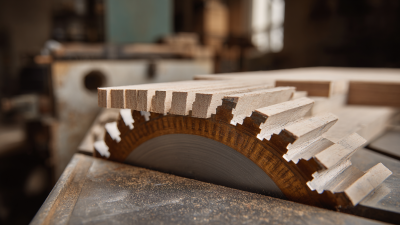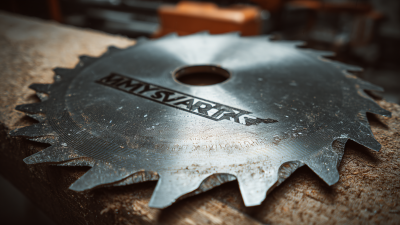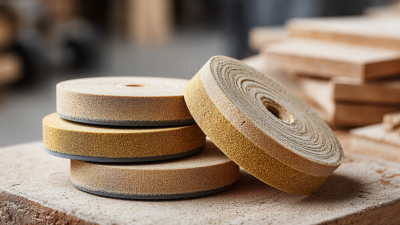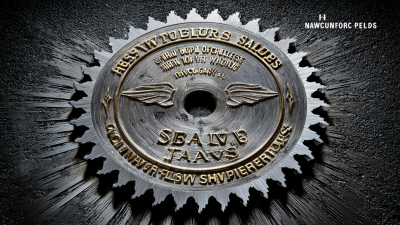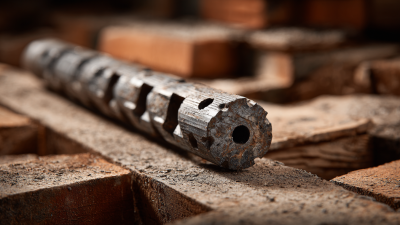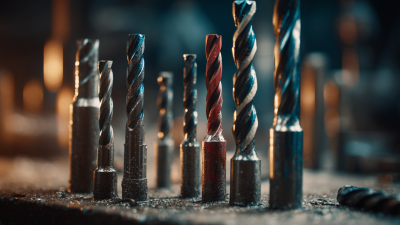FREE SHIPPING ON ALL BUSHNELL PRODUCTS
Leave Your Message
Choosing the right miter saw blade is crucial for achieving precision cuts that meet the highest standards in woodworking. According to industry expert Michael Smith, a renowned figure in the world of saw technology, “The right blade can transform your miter saw from a basic tool into an instrument of artistry.” This statement emphasizes the importance of selecting a blade tailored to your specific cutting needs, whether you are working on intricate moldings or robust lumber.
In the realm of woodworking, understanding the distinct types of miter saw blades available is essential for any professional or hobbyist. Each blade type offers unique features designed to tackle different materials and achieve various finishes. In this guide, we will delve into ten essential tips that will assist you in selecting the ideal miter saw blade, ensuring that your cuts are not only accurate but also flawless. By recognizing the specifications and applications of each blade, you will enhance your woodworking experience and bring your projects to life with precision.

When selecting the right miter saw blade, understanding the different types available is crucial for achieving perfect cuts. Miter saw blades come in various styles, including crosscut blades, rip blades, and combination blades, each designed for specific applications. Crosscut blades feature fine teeth that minimize splintering, making them ideal for cutting hardwoods and composites. On the other hand, rip blades have fewer teeth, allowing for faster cuts in softwoods and thicker materials. Combination blades offer versatility, accommodating both crosscut and rip cuts, making them a great choice for general woodworking.
To ensure you’re maximizing the potential of your miter saw, here are some essential tips. First, always match the blade type to the material you are cutting. For precision cuts in delicate woods, opt for a crosscut blade. Second, consider the tooth count; a higher tooth count results in smoother cuts, while a lower count can facilitate quicker cuts but may leave a rougher finish. Finally, pay attention to the blade’s kerf, as this can impact the cut's width and the saw’s performance. Choosing the right blade based on these criteria will help you achieve clean, accurate results.
When selecting a miter saw blade, several key factors influence its performance and durability. Firstly, the material of the blade is crucial. Blades made from high-speed steel (HSS) are common due to their resistance to wear and ability to hold a sharp edge. However, carbide-tipped blades are often preferred for their longevity and capability to cut through harder materials without dulling quickly. The choice of blade material directly impacts how efficiently it performs over time and affects the quality of the cuts.

Another significant factor is the tooth configuration and count. Blades with fewer teeth, typically around 24, are designed for faster, rough cuts, while those with higher tooth counts, such as 80 or more, provide smoother finishes for fine work. Additionally, the tooth geometry plays a role – for instance, alternate top bevel (ATB) teeth are ideal for crosscutting, while flat top grind (FTG) teeth work better for ripping wood. Understanding these aspects can greatly enhance the cutting capabilities of your miter saw and ensure that it meets the demands of your projects.
When selecting the right miter saw blade, understanding tooth count and geometry is crucial for achieving your desired cutting effects. The tooth count directly influences the finish of your cut. A blade with fewer teeth is designed for faster cuts and is ideal for rough cuts in softwood or composite materials. Conversely, blades with a higher tooth count are perfect for fine, smooth cuts in hardwoods and are often used for intricate projects where precision is key.
The geometry of the teeth also plays a significant role in cutting performance. For instance, positive hook angles enable aggressive cutting and faster feed rates, making them suitable for framing or general construction work. On the other hand, a flat or negative hook angle provides more control and is excellent for delicate finishes, reducing the risk of chipping when cutting veneers or laminate.
Choosing the right combination of tooth count and geometry will not only enhance the quality of your cuts but can also prolong the lifespan of your blade. Always consider the material you'll be working with and the type of cut you aim to achieve.
When selecting a miter saw blade, material choice plays a crucial role in achieving precise cuts and prolonging the blade's lifespan. Different materials require specific blade configurations to optimize performance. For instance, carbide-tipped blades are an industry favorite for cutting hardwoods and laminates, as they offer superior durability and retention of sharpness. According to a report by the Woodworking Industry Association, using the proper blade can increase cutting efficiency by up to 30%, significantly reducing work time on tasks such as crown molding or trim installation.
For softer materials like plywood or softwoods, a blade with a higher tooth count—ranging from 60 to 80 teeth—is recommended to minimize splintering and ensure a smooth finish. In contrast, a lower tooth count, around 30 to 40, is sufficient for cutting through framing lumber or composite materials, providing faster cuts while still maintaining a reasonable level of finish. The correct selection based on material type not only enhances the quality of the cuts but also contributes to the overall safety and effectiveness of the miter saw operation.
When it comes to selecting the right miter saw blade, assessing the blade coating is crucial for achieving enhanced cutting efficiency and longevity. Different coatings can drastically affect a blade's performance under varied conditions. For instance, carbide-tipped blades are a popular choice due to their durability and ability to maintain sharpness over extended periods, allowing for cleaner cuts. In a recent industry report, blades featuring specialized coatings showed a 30% increase in cutting speed while reducing friction, which is essential for efficient woodworking projects.
Moreover, advanced coatings such as Teflon or nickel not only improve the resistance to wear and tear but also assist in reducing the accumulation of pitch and sap, particularly when working with softwoods. Research indicates that miter saw blades with these coatings can last up to 50% longer than their uncoated counterparts. This longevity translates directly into cost savings for contractors and DIY enthusiasts alike, minimizing the frequency of replacements and ensuring consistent performance on the job. Choosing a blade with the right coating is not just about immediate performance; it's an investment in time and resources that pays off in the long run.

